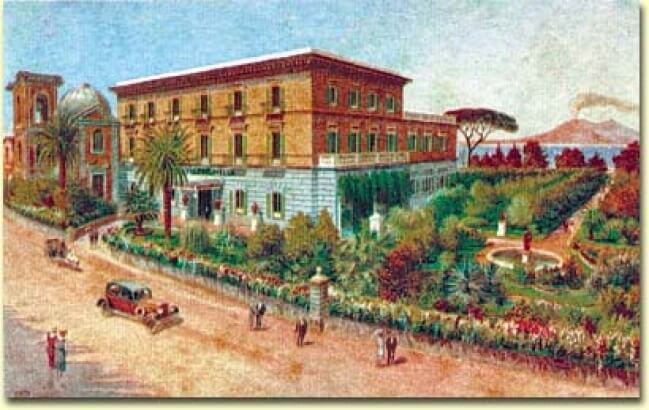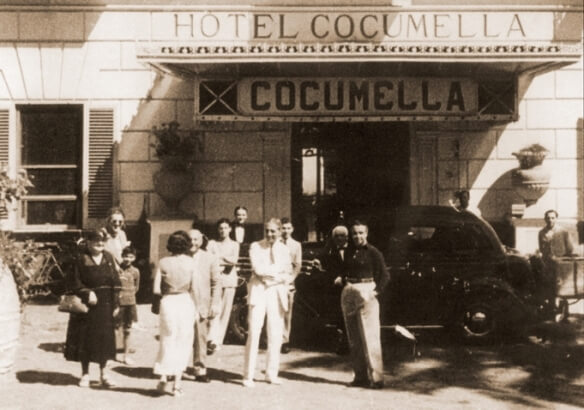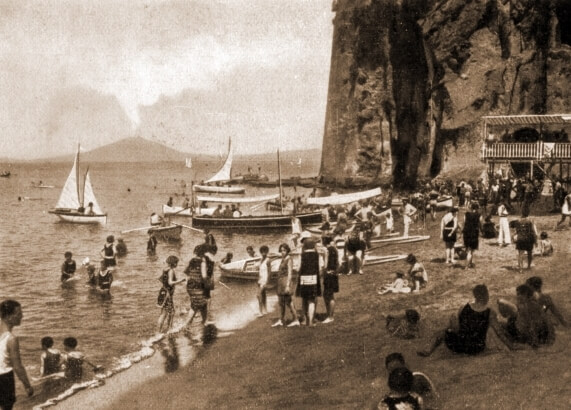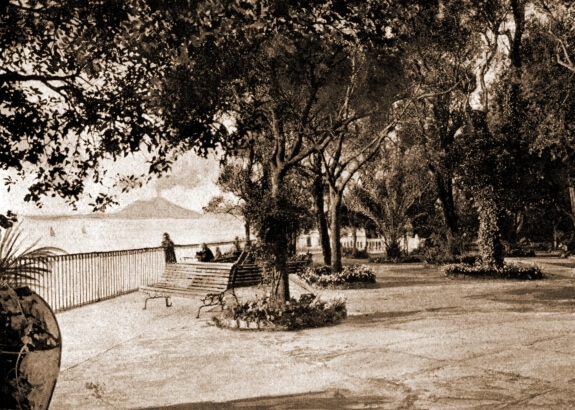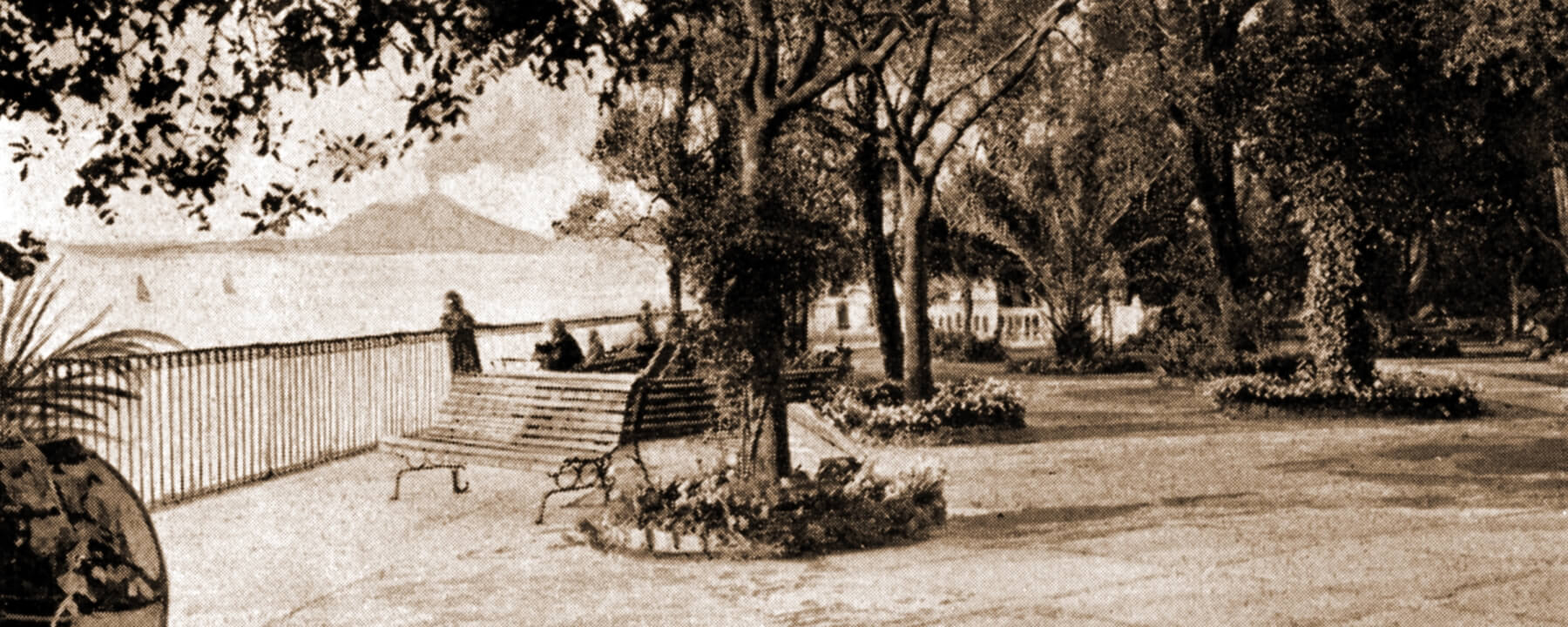
Choose the restaurant and book your table now
-
Scintilla
Mediterranean bistro serving gourmet cuisineBook a table
-
L'Agrumeto
Take a rest in the shade of the orange treesBook a table
-
Coku
Robata Grill & Cocktail BarBook a table
A fascinating journey through time
History
Grand Hotel Cocumella is the oldest hotel on the Sorrento Peninsula.
With its wonderful garden reaching as far as the seashore, La Cocumella has been residence of the Jesuits since 1637, while from 1777 it became first an inn and then a hotel.
In 1978, the building was expertly restored by the architect Nino del Papa, who transformed it into the enchanting estate we see today.
The antique cloisters with a private church, elegant rooms, peaceful gardens, spectacular terrace and evocative caves descending towards the seafront have hosted the most illustrious travellers of the Grand Tour, from Goethe to Mary Shelley, Hans Christian Andersen to Sigmund Freud over the centuries. Even today, this location resonates with history and art from centuries ago.
The origin of the name is uncertain: it may have derived from the nymph Colomeide or from the family \"Cocumella\", originally from Corfu. One intriguing idea is that the name came from the terracotta vases used to carry water to Capri on behalf of the emperor Tiberius,\"cuccume\".
Sono numerose anche le leggende che ruotano attorno all'Hotel La Cocumella: si narra ad esempio che in un muro dell'albergo l'ultima amante di Shelley, Claire Jane Clairmont, abbia nascosto una teca che conteneva il cuore del poeta, avuto in dono da Byron che lo strappò dal corpo dell'amico affogato a Lerici.
1597
The Jesuit priests built a refuge in a beautiful part of the countryside, dotted with citrus groves stretching down as far as the Sorrento sea.
1637
The Sorrento residence of the Jesuit Fathers"was finally inaugurated, with a priest father and a coadjutor brother. The building was simple and modest, with a large courtyard surrounded by high porticoes and a well-shaped well in the centre, emerging from a vast and deep Roman cistern, which received water from the equine games, conducted in terracotta canals through the villages of the Piano, up to Sorrento. On three sides of the portico there was a series of rooms, and on the fourth there was a terrace, which overlooked the garden and offered the view of the wonderful panorama of the gulf.
1777
The building becomes first an inn and then a hotel, becoming the oldest refuge on the Sorrento peninsula.
1978
The building was expertly restored by the architect Nino del Papa, who transformed it into the enchanting estate we see today.

